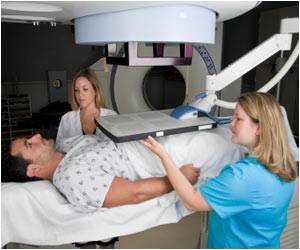Obsessive-compulsive disorder is an anxiety disorder in which people have persistent, upsetting thoughts (obsessions) and/or repetitive behaviours (compulsions).

There are many types of obsessions and compulsions. A person may have an excessive fear of germs and the compulsion to repeatedly wash the hands. An obsession with intruders may prompt a person to lock and relock his door many times before going to bed. Performing rituals is not pleasurable to the affected person; it just provides a temporary relief from the anxiety created by obsessive thoughts.
Even healthy people have rituals. There are many who check to see if the stove is off several times before leaving the house. However, not all such cases are OCDs. In persons with OCD, performing their rituals interferes with daily life. But this does not prevent them doing the compulsive acts. They find the repetition distressing.
OCD sets in during adolescence or early adulthood. Males and females are equally afflicted by the disorder. A type of OCD called Early-onset OCD develops before puberty and may go into remission before adulthood.
OCD might run in families; research proves that OCD has a strong genetic component. Familial and environmental factors may influence the development of the disorder.
Diagnosis of OCD
There are screening questions that help to diagnose OCD. The following questions were framed by Morgan and Kirkwood:
2) Do you keep things extremely clean or wash your hands frequently?
3) Do you check things excessively?
Fenske and Schwenke suggest asking: Do you ever find it necessary to do certain things that don’t make sense or that you don’t want to do?
The Yale-Brown Obsessive Compulsive Scale (Y-BOCS) is used to determine the severity of a patient’s OCD symptoms. It can reliably assess the efficacy of the treatment a patient is receiving.
Comorbidities
Almost 90% of patients with OCD suffer from another psychiatric disorder. OCD can be accompanied by eating disorders, other anxiety disorders, or depression. Alcohol or substance abuse may occur in OCD patients. Learning disorders and behavioral disorders are common in children with OCD.
Approximately two-thirds of patients experience major depressive disorder at some point in their lives. Suicidal thoughts occur in more than half of the patients. Co-morbid depression may be associated with a poorer treatment outcome.
Treatment
OCD is often undertreated owing to the difficulty to diagnose. Treatment rarely resolves all symptoms, and improvement occurs slowly. However, even a partial improvement can be greatly beneficial for the patient. Treatment for OCD consists of psychotherapy (particularly cognitive-behavioral therapy [CBT]) and medication. Treatments target at decreasing symptoms. Patient and family education can be helpful for enhancing adherence to treatment.
Cognitive behavioral therapy (CBT) is the most effective type of psychotherapy for this disorder. The patient is exposed many times to a situation that triggers the obsessive thoughts. He/she gradually learns to tolerate the anxiety and resist the urge to perform the compulsion.
Imbalance of a chemical called serotonin is believed to be the underlying mechanism responsible for OCD. Medications that rectify this imbalance form the cornerstone of therapy. A type of antidepressant called a selective serotonin reuptake inhibitor (SSRI) is the most commonly used drug for OCD. Fluoxetine, paroxetine, fluvoxamine, and sertraline are SSRIs approved for OCD. These drugs are used in dosages higher than that used for depression. If an SSRI does not work, another type of antidepressant called a tricyclic antidepressant (TCA) is used. Clomipramine, a TCA, is the oldest known medication for OCD. It is known to have superior efficacy over SSRIs. However, it causes a number of side effects like difficulty in urination, dry mouth, sleepiness and drop in blood pressure when rising from a seated position.
SSRIs are better tolerated, and hence they are the first-line agents. It may take weeks or months for the medication to work. The medication should be taken for at least 8 to 12 weeks before concluding that patient’s response is inadequate. It also important to monitor the patient for symptoms like anxiety, tremor, tachycardia (increase in heart rate), and sweating; these features may suggest a condition called serotonin syndrome. Special care should be given while prescribing doses to the elderly.
A number of alternative drugs may be tried if an initial SSRI treatment turns inadequate. Antipsychotics like quetiapine and risperidone showed some efficacy in certain studies. Serious adverse effects limit their use. Drugs like memantine and amantadine may be of benefit in cases unresponsive to SSRIs. These drugs modify the transmission of a neurotransmitter called glutamate (which is supposed to play a role in the development of OCDs).
Ondansetron, a drug commonly used as an anti-emetic (especially to ameliorate severe vomiting induced by anti-cancer drugs), is being studied for its effect as an adjunctive medication. Taken concurrently with an SSRI, the drug has shown increased efficacy without a worsening of adverse effects in some studies.
Drug therapy should be continued for at least 1 to 2 years. Some patients require lifelong medication. The relapse rate is very high. Cognitive behavioral therapy used in conjunction with medication often results in a greater response.
OCD remains to be an extremely debilitating condition inflicting severe patient distress. Some patients require lifelong medications. It is vital that the patient is reassured and made aware of the available resources. A number of self-help groups, which may be located through the International OCD Foundation, are available and may be of great benefit.
References:
1. OCD and Its Treatment; Suzanne Albrecht et al; US Pharm. 2011;36(11):58-63.
2. A.D.A.M. Medical Encyclopedia.
Source-Medindia










